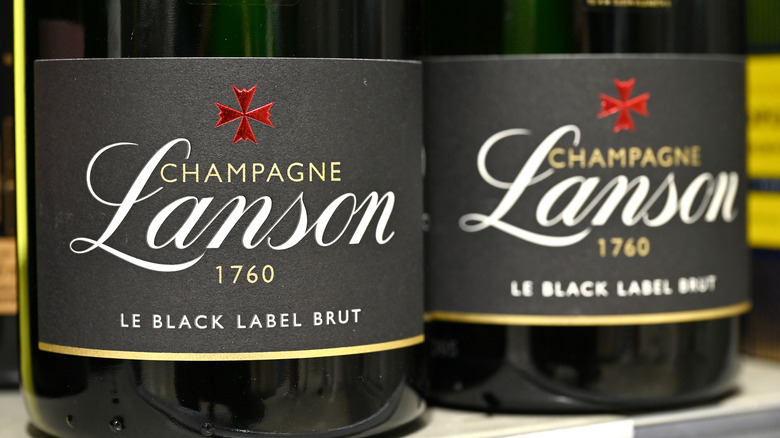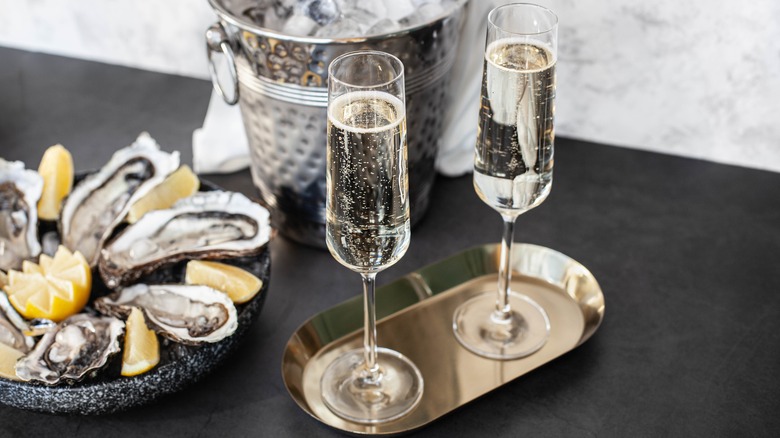What Does It Mean If Your Sparkling Wine Has 'Brut' On The Label
Let's say you're in charge of getting wine for an upcoming party, and although you know what kinds you like, you're not quite an expert. You pick up a fancy bottle of Champagne at the liquor store, and while you're looking for hints about what kind it is, you see it's labeled as "brut." What exactly is a brut? How do you even pronounce that word?
To answer both of those questions at once, "brut" is pronounced like the word "brute" with a long u sound, and it refers to a popular style of dry sparkling wine. This means the wine is made with very little sugar (less then 12 grams of sugar per liter). As a result, they're almost never sweet — sweet tastes come from sugar, after all — although there are exceptions. Some folks might assume that the term brut refers specifically to Champagne, but Champagne is any sparkling wine that's made and bottled in the Champagne region of France. A fizzy white wine made elsewhere can just as easily be a brut.
What makes a wine dry?
The word "brut" itself is a French word which translates to "dry" or "raw." It's a little counterintuitive to refer to any liquid as "dry," and there's some debate over why exactly the word dry caught on. It can refer to the dry mouthfeel it leaves behind or the absence of sugar, which creates a complicated flavor that's the opposite of "sweet." A brut tastes crisp and acidic, often with fruit flavors much like any Champagne or similar sparkling white wine. On occasion, those added fruits or even a high alcohol content can sometimes make a brut slightly sweeter, but not by much.
Grapes naturally have sugar, but during the fermentation process, the yeasts convert them into alcohol. A straightforward brut is going to have very little sugar left after fermenting. Sometimes you'll see different levels of brut: An extra-brut has 6 grams per liter, and a bottle labeled "brut nature" has less then 3 grams per liter and tastes extremely crisp. There's a wide range of different styles for Champagne, ranging from those dry brut wines to sugary "doux" wines (doux is French for "sweet").
How to pair a brut
If all that sounds appetizing, your next step is deciding what to pair with this bright glass you've just poured. Brut Champagnes thankfully go with quite a bit, which makes sense, as they're easily the most popular type of Champagne in both the United States and abroad. Its acidity means it'll go well with savory and salty foods, like cheeses, pastas, potatoes, mushrooms, or nuts. Lighter meats like chicken and seafood work great, but it'll pair with steak, too. Even if you're not eating something fancy like caviar with your Champagne, fried foods tend to pair nicely because of how rich they are (though it might look like an odd combination).
A brut does not go well with more sugary foods, so don't pair brut Champagne with wedding cake. Acidic wines and sweet foods don't mix, and often you want to look for foods less sweet than the wine itself. Instead, bring a doux or a demi-sec (semi-sweet) Champagne bottle to that wedding instead. That brut will come in much more handy during dinner.


